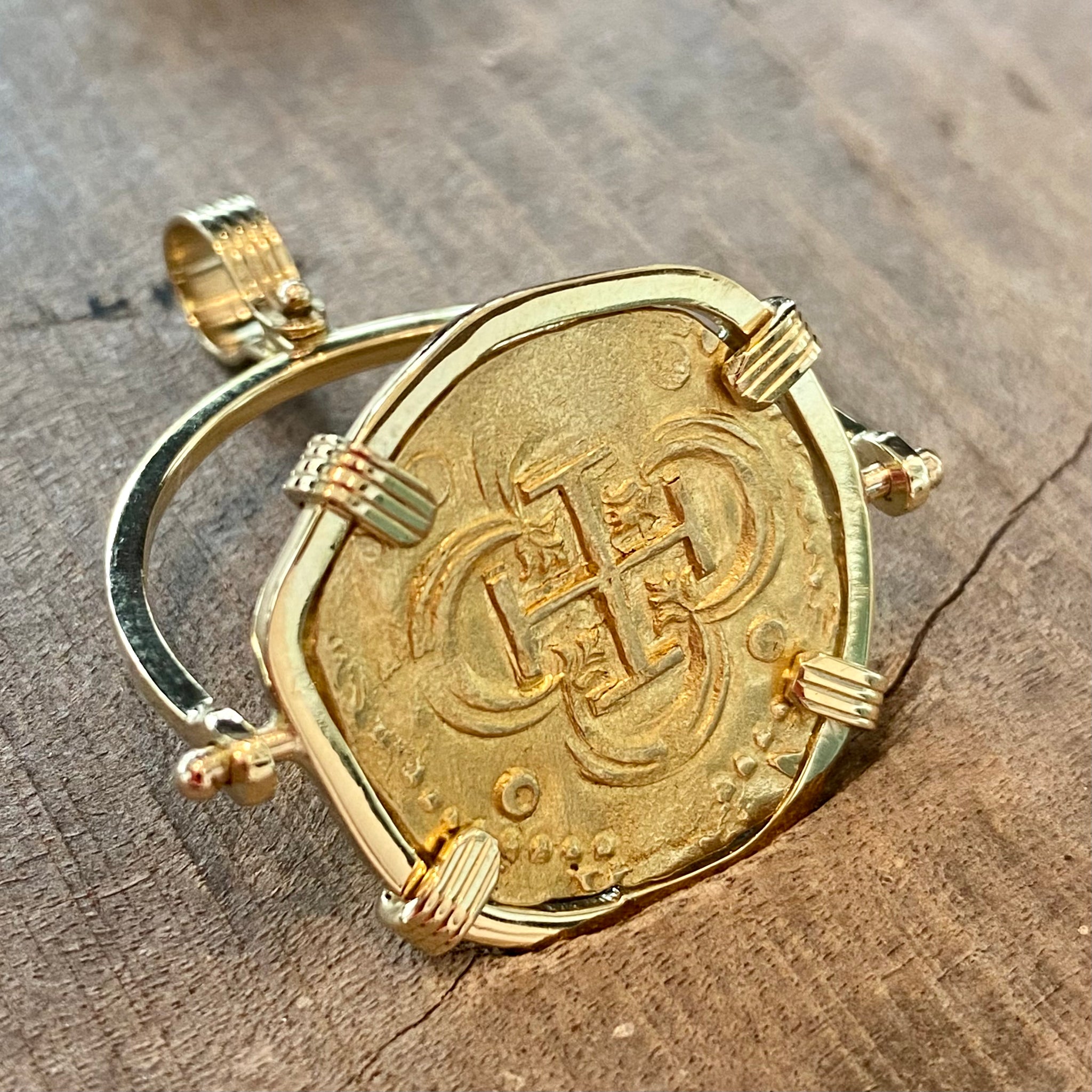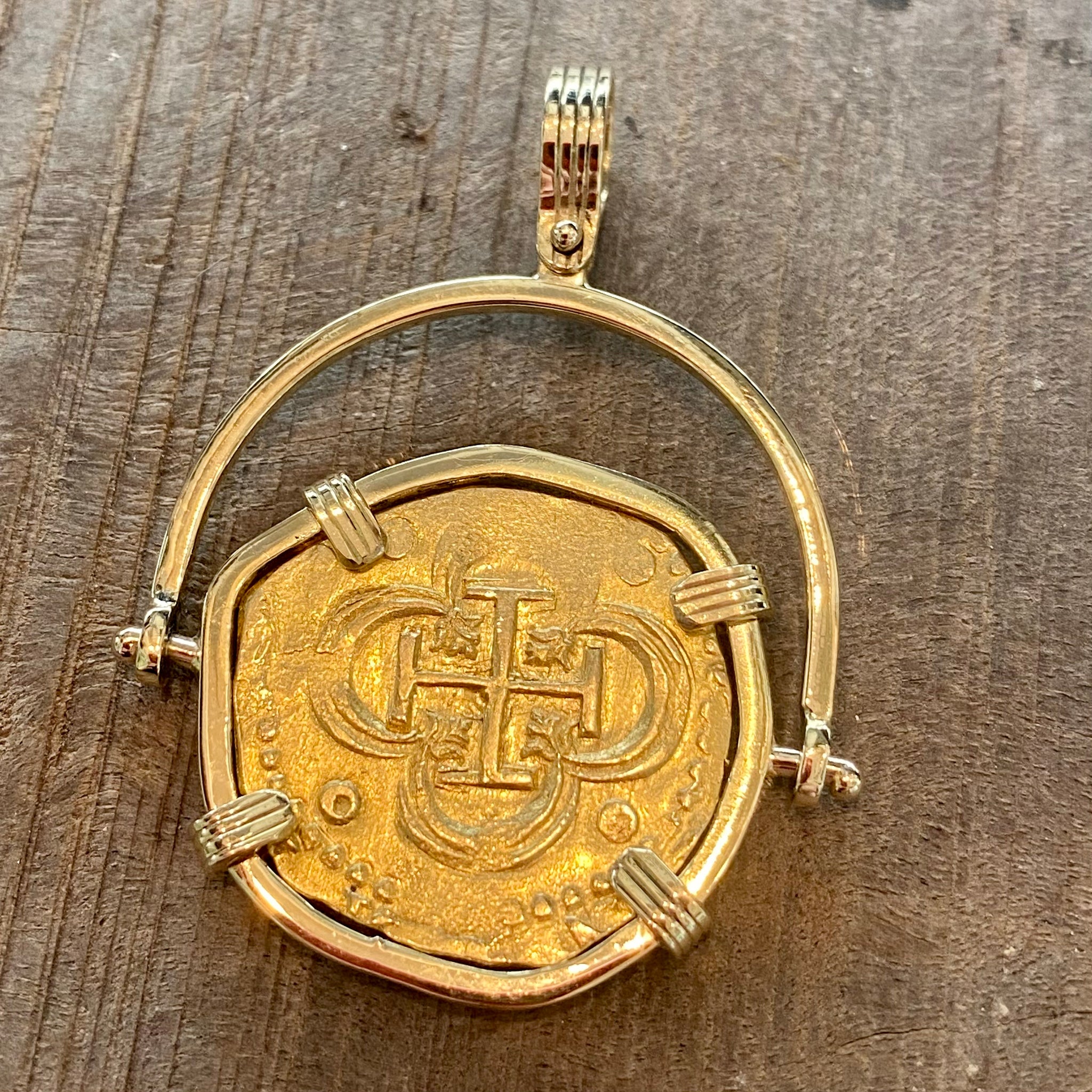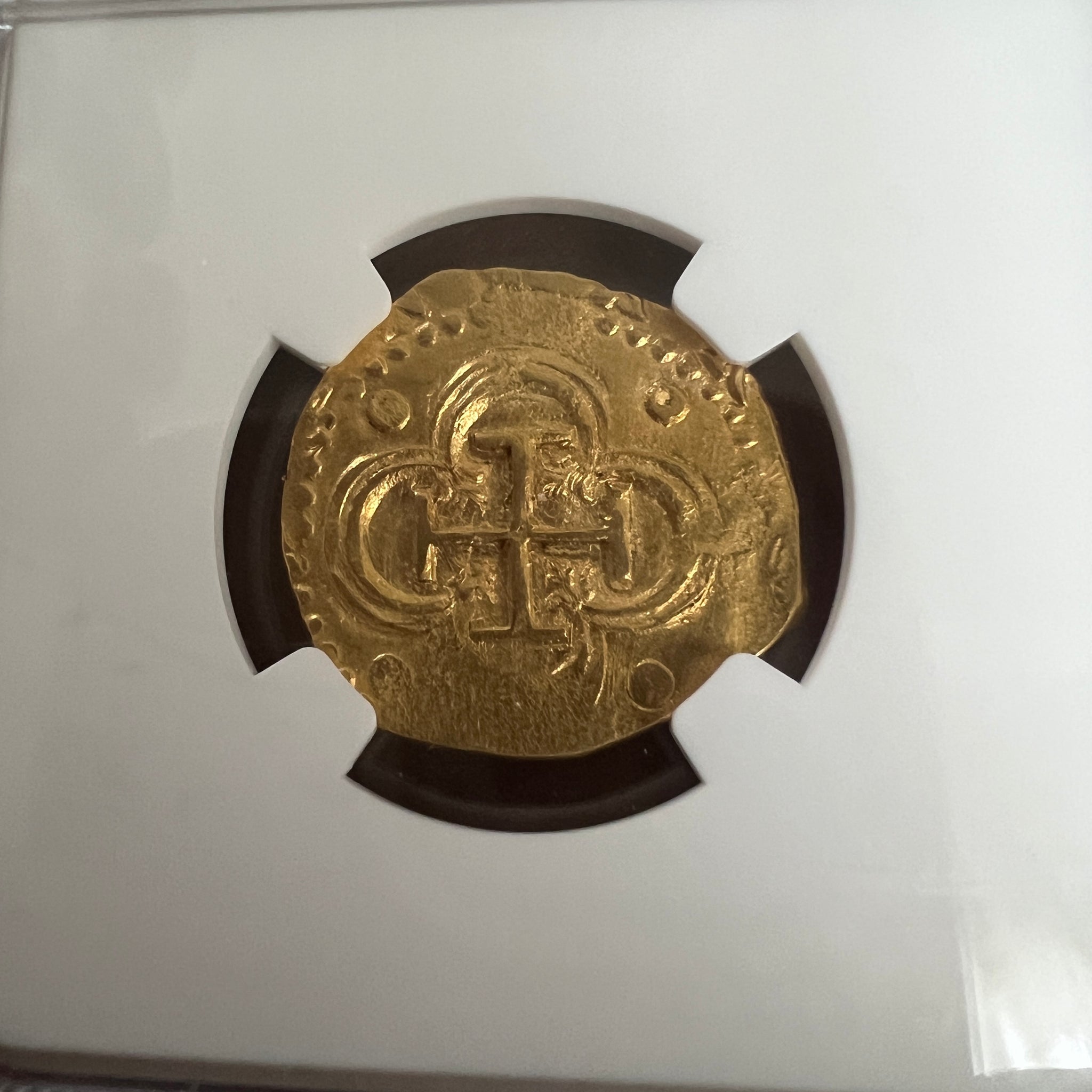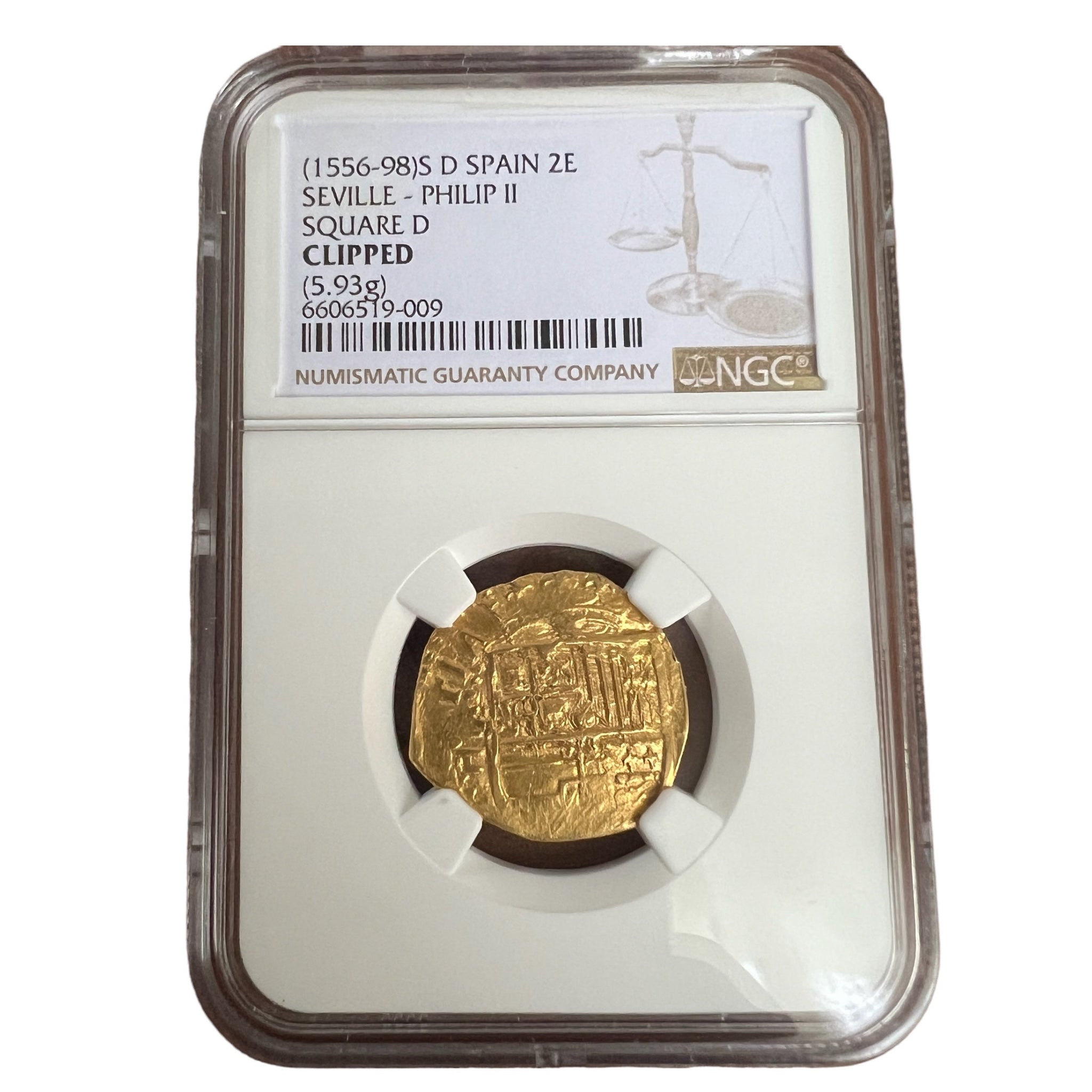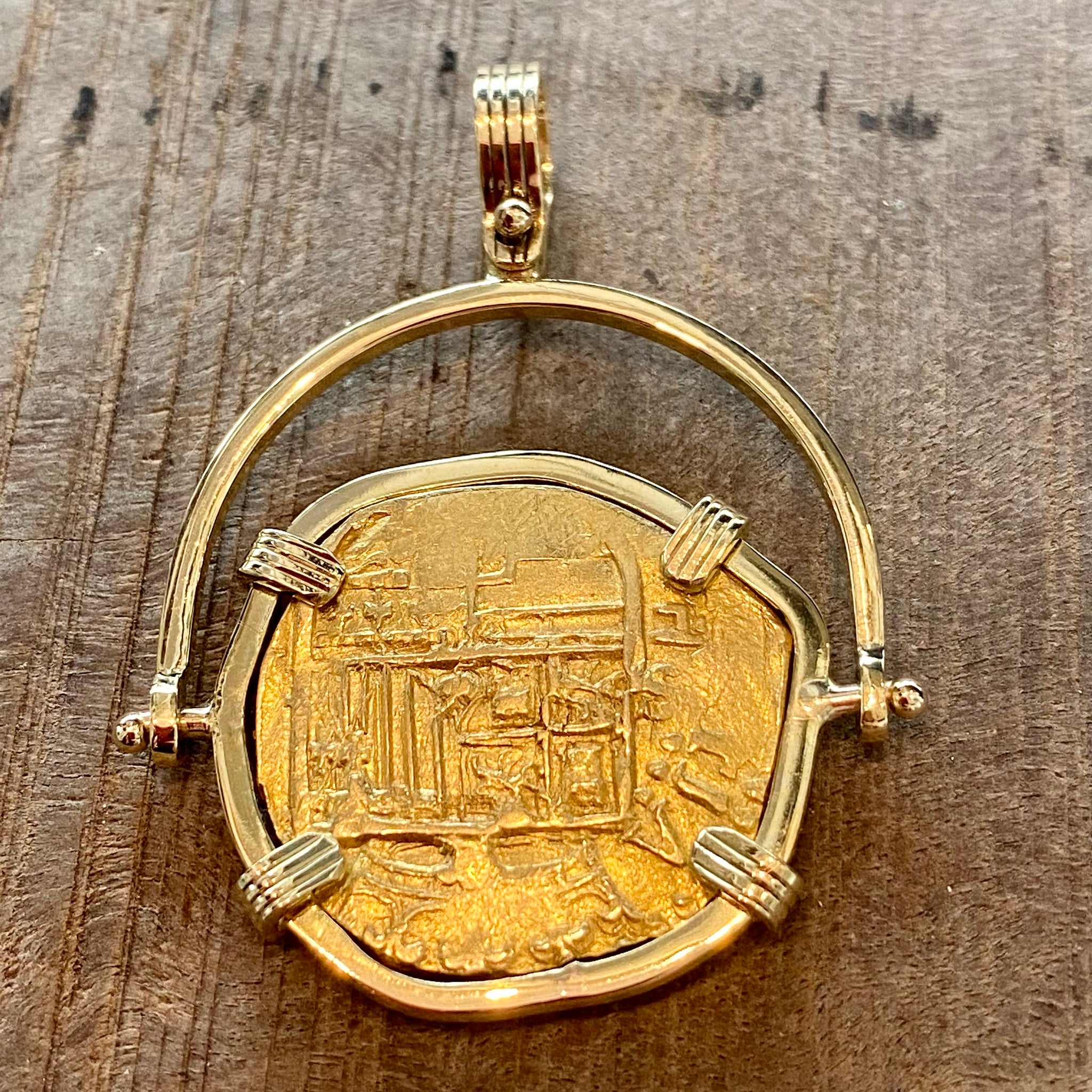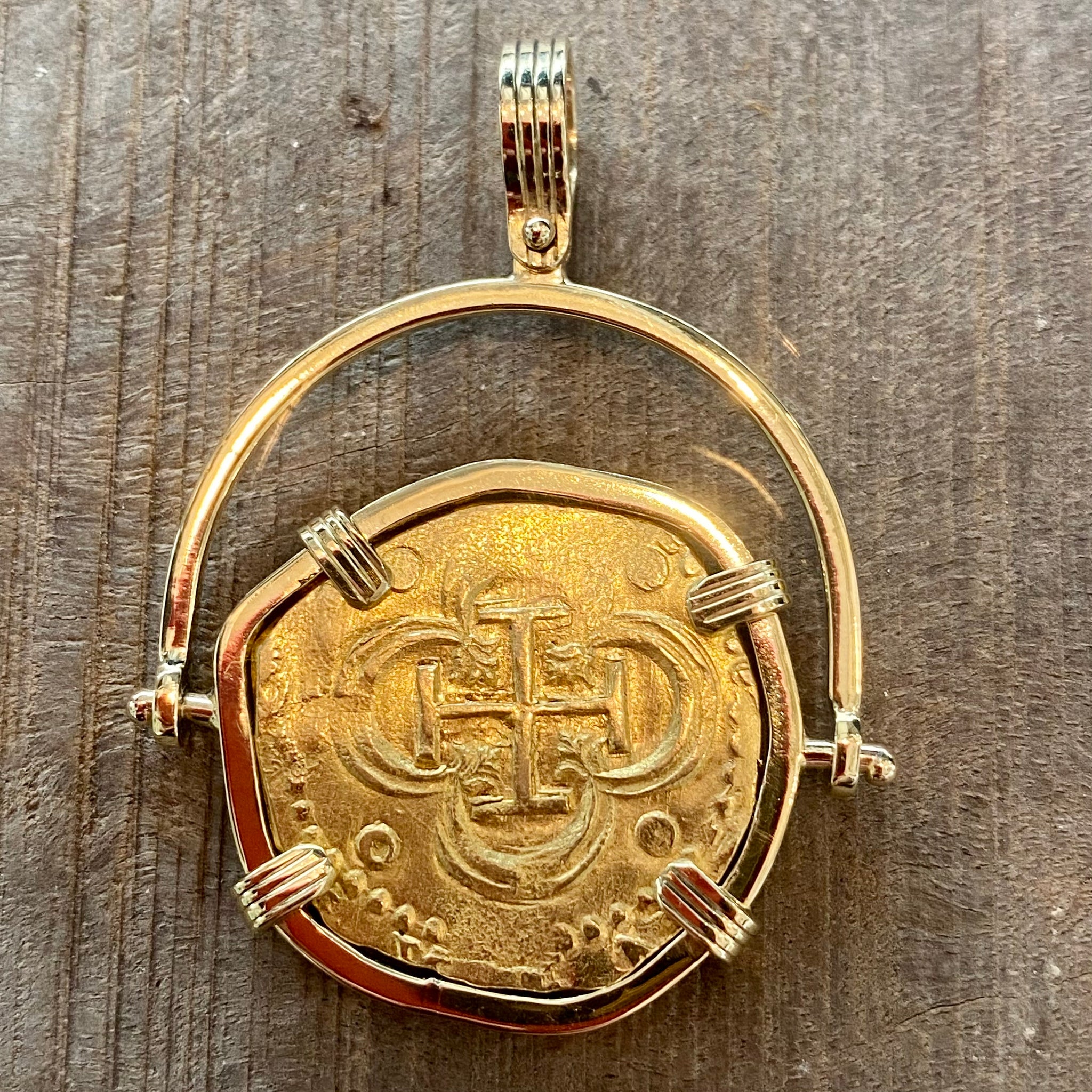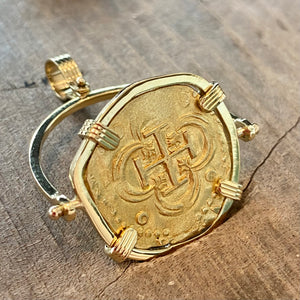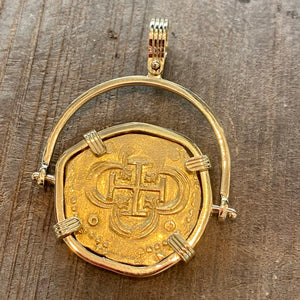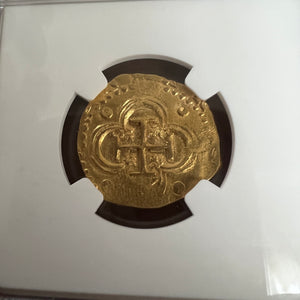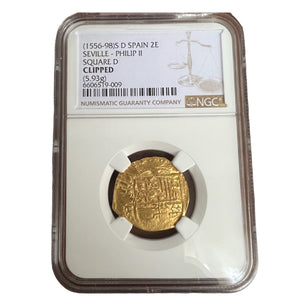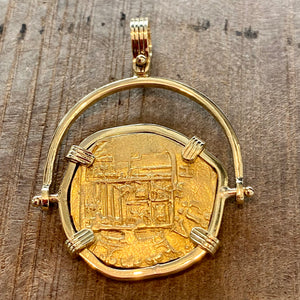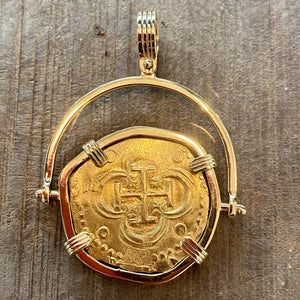Spain Gold 2 Escudos - Flip Mount - Assayer "Square D"
$6,848
Denomination: 2 Escudos
Mint: Seville
Reign: Philip II
Weight: 5.93g
Assayer: "Square D” (1566-1587)
Mount: 18K Flip
Grade: NGC 6606519-009
Date: Not Dated - Circa (1566-1587)
Description: Philip II (1556-1598) gold Cob 2 Escudos ND (1566-1587) S-D Clipped Showing crisp devices with luminous crevices despite the grade qualifier. Reverse: Bold Jerusalem Cross side, center strike. Obverse: Bold crowned shield with prominent Mint and Assayer Mark.
History: The Seville Mint (Spanish: Casa de la Moneda de Sevilla) was one of the seven main mints of Castile authorized to continue after 1497 by the Catholic monarchs, the rest being closed. The earliest coins minted in Seville date back to Roman times, around 15 B.C. Later, the Visigoths minted from the year 621, the Arabs after 1060, and the Christian kings from 1252. The New Mint was built in the Atarazanas orchards, next to the river and a few steps from where the colonial fleets arrived with the metals. During the reign of Felipe II, the House of Seville processed 72% of all the silver, and 87% of all the gold minted in the Iberian Peninsula, leaving the other mints almost without work. The Ordinance of 1730 for the centralization of mints eliminated all except those of Madrid and Seville, which would mint only silver and gold, and Segovia, which would be dedicated to striking copper coins.
In 1855, a new and large mint was planned in Madrid, leading to the closure of the others. In 1861 the new Madrid factory was inaugurated and in 1869 the houses of Seville, Segovia and Jubia were closed, their equipment being sold at public auction.
21251

